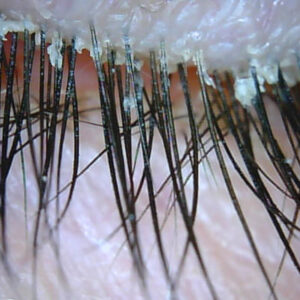News & Opinion: YES Connect
August 2016
by Liz Hillman
EyeWorld Staff Writer

Are you able to confidently adjust your phaco machine settings to produce a desired result? Could you recreate your settings from scratch if they were not available on your machine? How did you arrive at your current settings?
In this month’s column, we recap some of the highlights from the ASCRS webinar “Phaco Fun, Do You Know Your Machine?” We have asked webinar presenters Berdine Burger, MD, Edwin Chen, MD, David Chang, MD, and Kenneth Cohen, MD, to recap the webinar’s most salient points and offer some additional pearls. YES Committee member Sumit “Sam” Garg, MD, also provides insights for getting to know your available phaco platforms.
In addition to the resources available through ASCRS, I recommend that surgeons still in training programs take advantage of the ready accessibility of faculty mentors and familiarize themselves with how they came to develop their phaco settings. For surgeons already in practice, take a moment to reflect upon your current settings and determine if there are any settings in need of adjustment or updating, and call upon available resources for additional guidance whenever necessary. Most of all, do not be afraid to get to know your phaco machine.
This webinar is the first in a series discussing phaco fluidics, with subsequent sessions slated to delve into more specific surgical circumstances and the potential intraoperative adjustments that might be considered. Be on the lookout for information regarding future webinars, and check the ASCRS website for any webinars that you may have missed.
—Charles Weber, MD, YES Connect co-editor
Personalizing phaco settings for optimum safety and efficiency
Those unfamiliar with fluidics in the eye might not risk changing settings on their phacoemulsification machine and could thus be missing out on significant safety and efficiency opportunities, said Berdine Burger, MD, Carolina Eyecare Physicians, Charleston, South Carolina.
“The phaco machine is too often treated like an unknown black box,” said Dr. Burger, the facilitator of the recent ASCRS webinar “Phaco Fun, Do You Know Your Machine?” sponsored by the Young Eye Surgeons (YES) Clinical Committee.
Edwin Chen, MD, Ocean Eye, San Diego, said one of the main reasons the YES Clinical Committee decided to develop and host the Phaco Fundamentals webinar series is to help young eye surgeons learn to transition from generic resident settings to more refined personal settings.
“In talking to young surgeons, we found that many of them were not comfortable with the mechanics behind fluidics and how this related to their experience in the OR,” Dr. Chen said. “The basis of settings modification is a deep understanding of how each parameter affects movement in the anterior chamber and how those parameters are interrelated. From there, I think it is a matter of slowly adjusting things and refining those adjustments as you see how your modifications affect fluidics in the [anterior chamber.]”
“Be willing to play with your settings. Small, intentional adjustments of a single variable can make a significant difference in efficiency and safety.”
Berdine Burger, MD
With Dr. Chen as the moderator, the panel was composed of David F. Chang, MD, clinical professor, University of California, San Francisco, and Kenneth Cohen, MD, Sterling A. Barrett Distinguished Professor of Ophthalmology, University of North Carolina School of Medicine, Chapel Hill, North Carolina. The webinar delved into how surgeons can best set their phaco machine parameters and how to modify those settings for more complicated situations or when complications arise. The expert panel first reviewed the basics of why and how to choose settings for aspiration flow, vacuum, and power modulation.
Webinar highlights
Dr. Chang first explained that aspiration flow rate determines the speed at which things happen. Therefore, when facing a tough case, trying a new machine, or transitioning to a new phaco technique such as chopping, surgeons should slow the procedure down by lowering the aspiration flow rate. Vacuum, he said, determines the grip and holding power.
“If a quadrant keeps falling off the phaco tip because you don’t have a strong enough grip prior to a chop, you might consider increasing the vacuum,” Dr. Chang said. “What limits how high we can set the vacuum is, of course, post-occlusion surge. Chamber shallowing occurs when too much fluid surges into the phaco tip as soon as occlusion breaks from a high vacuum level. We know that the cornea can collapse from excessive surge, but consider that the posterior capsule can flex forward with relatively minor levels of surge.”
Dr. Chang said that the most important advances during the past decade have been with phaco power modulation. “Non-longitudinal phaco replaces pure axial motion of the phaco tip with either torsional movement—Ozil [Alcon, Fort Worth, Texas]—or elliptical movement—Ellips [Abbott Medical Optics, Abbott Park, Illinois]. This maintains cutting efficiency, while reducing the repelling action of pure longitudinal phaco that tends to kick microscopic nuclear fragments toward the corneal endothelium.”
How does one know whether settings are right for quadrant removal?
Dr. Cohen said the most important factor for distal followability is aspiration flow rate, or you can be in foot position 2 and bring the phaco needle closer to the fragment to have the same effect without increasing flow rate. Once the fragment is in the center, it is held in place for phaco by vacuum.
During irrigation and aspiration (I/A), Dr. Chang said one can use linear control of vacuum in foot position 2, with a very high maximum setting due to the small aspiration port.
“With linear vacuum, the more I push my pedal down in position 2, the higher the vacuum limit is,” he said. “For cortical cleanup, you typically need three different levels. I first access low vacuum (e.g., 50 mm Hg) to attract material to the tip. Then I need a 150–200 mm Hg level to grab and grip the cortex without evacuating it. This level allows me to strip and peel the cortex away from the capsule. Once the cortex is free and safely held mid-pupil, I maximize vacuum by flooring the pedal and fully evacuate it. Having linear control of vacuum for I/A essentially allows me to change back and forth between these three vacuum settings during cortical cleanup.”
Subincisional cortex is addressed first because it holds the capsular bag open, Dr. Cohen said, and allows the posterior capsule to remain protected by a layer of cortex should you happen to grab posteriorly. Dr. Chang said his main pearl for subincisional cortex removal is proper hydrodissection.
“It’s the single most underrated step because a good hydrodissection wave loosens the cortex and makes it separate easily in large sheets from the capsular bag,” he said.
In a more challenging case, such as a deep anterior chamber, Dr. Cohen said you have to worry about reverse pupillary block, and may have to lower the bottle for a more stable anterior chamber, using a small instrument to lift the iris off of the anterior capsule and releasing any trapped fluid.
With high myopes, although one can undo pupillary block once it occurs, it is better to prevent it from occurring, Dr. Chang said. “I enter the OVD-filled AC with the phaco tip in foot position 0, and lift the contraincisional iris with the phaco tip prior to engaging foot position 1. Irrigation fluid simultaneously flows into the anterior and posterior chambers, thereby preventing lens-iris diaphragm retropulsion syndrome from occurring.”
The faculty then addressed a complication: posterior capsule rupture. Dr. Chang emphasized the need to remain calm. Surgeons should mentally rehearse what needs to be done in this scenario.
“Avoid the natural instinct to immediately withdraw the phaco tip and instead stay in foot position 1. The continuing irrigation maintains pressure in the AC and gives you time to think about what you’re going to do next,” Dr. Chang said. “You’re going to take whatever OVD is on the table in your left hand to fill and stabilize the AC,” he explained. “As soon as you start injecting OVD, go to foot position 0 to allow it to accumulate. Once the AC is filled, you can remove the phaco tip and unplug the incision without shallowing the AC and rupturing the hyaloid face.”
If an anterior vitrectomy is needed, Dr. Cohen said it is important to be aspirating and cutting while moving the probe around to avoid the risk of tugging on the vitreous and causing a retinal tear or retinal detachment. Dr. Chang addressed how to discuss complications with patients. “After explaining that the case did not go as planned, I make sure to emphasize that the prognosis is still good,” he said. “I have the patient and family return to the clinic later that same day so that I can check the IOP and spend as much time as necessary to discuss the prognosis and answer questions.”
In terms of preventing posterior capsule rupture, Dr. Chang offered the pearl of the viscoelastic vault maneuver to prevent the posterior capsule from trampolining toward the phaco tip as the final nuclear fragments are removed. “The dispersive OVD resists aspiration, places the posterior capsule on stretch, and blocks the posterior capsule from the phaco tip,” he explained. “This is a wonderful safety strategy if you are dealing with ultra-brunescent nuclei in which the epinucleus is absent, or weak zonules where there is an unusually lax and pliant posterior capsule.”
Further insights
When young surgeons are ready to transition from generic resident settings to more personalized settings, Sumit “Sam” Garg, MD, medical director, Gavin Herbert Eye Institute, University of California, Irvine—who likes to use the WHITESTAR Signature Phacoemulsification System (Abbott Medical Optics) for its ability to switch between peristaltic and venturi pumps—recommended they first receive some information from an industry representative about the phaco machine they’re using.
“Don’t be shy about calling in your phacoemulsification rep to help you personalize your settings as you learn surgery. Also, don’t be shy about calling them in on a regular basis to tweak your settings as you gain experience and confidence in surgery,” he said, adding that it’s important to realize there are no universally accepted settings. “Every eye and every surgery is different.”
Dr. Burger—who currently uses the Centurion Vision System (Alcon) with a sinusoidal “balance” tip—encouraged young eye surgeons to speak with their colleagues about their machine settings and make use of educational resources, such as lectures and webinars, for help on personalizing settings.
“Be willing to play with your settings,” Dr. Burger said. “Small, intentional adjustments of a single variable can make a significant difference in efficiency and safety.”
Drs. Chen, Burger, and Garg all advised those just starting out to go slow.
“People rarely regret going too slow, but they often regret going too fast,” Dr. Chen said.
Slowing down can be achieved by lowering your aspiration settings, Dr. Burger said, adding that lower IOP and bottle height make less of a difference. To speed up, Dr. Burger said increased vacuum can improve one’s ability to hold nuclear material and increased aspiration speeds the rate of movement.
Here’s more advice from Dr. Burger regarding how she would tackle these different conditions from a fluidics standpoint:
- Soft lens: It’s often possible to aspirate the cataract without any phaco power in this case, she said. Just increasing the vacuum can sometimes be enough to emulsify the cataract without any ultrasound.
- Dense cataracts: Dr. Burger said her torsional phaco ultrasound is set at around 60%, and she’ll add longitudinal phaco and increase vacuum to better grip nuclear material. Then she’ll increase the aspiration flow rate slightly to cool the phaco tip.
- Weak zonules: In this case, Dr. Burger said she lowers the bottle height for a lower IOP and uses a lower vacuum and aspiration rate to reduce zonular stress.
- Shallow chamber: There are not many changes to her usual phaco parameters in the case of a shallow chamber, but Dr. Burger said she makes sure to not lower the IOP and uses a dispersive viscoelastic to protect the corneal endothelium, occasionally reapplying it throughout surgery. A cohesive viscoelastic is applied on top of the iris to maintain anterior chamber stability.
- Fuchs’ dystrophy: While Dr. Burger said she doesn’t change her settings for these patients, she will apply Viscoat (Alcon) more frequently.
- Intraoperative floppy iris syndrome: Dr. Burger said she also won’t change her settings in this case, but she might use a Malyugin ring for dilation and will apply viscoelastic to the iris margin for stabilization.
Find more information about ASCRS webinars at ascrs.org/resources/type/web-seminars.
Editors’ note
Drs. Chang, Chen, and Cohen have no financial interests related to their comments. Dr. Burger has financial interests with Alcon. Dr. Garg has financial interests with Abbott Medical Optics.
Contact information
Burger: Berdine.Burger@carolinaeyecare.com
Chang: dceye@earthlink.net
Chen: eschen37@hotmail.com
Cohen: klc@med.unc.edu
Garg: gargs@uci.edu



